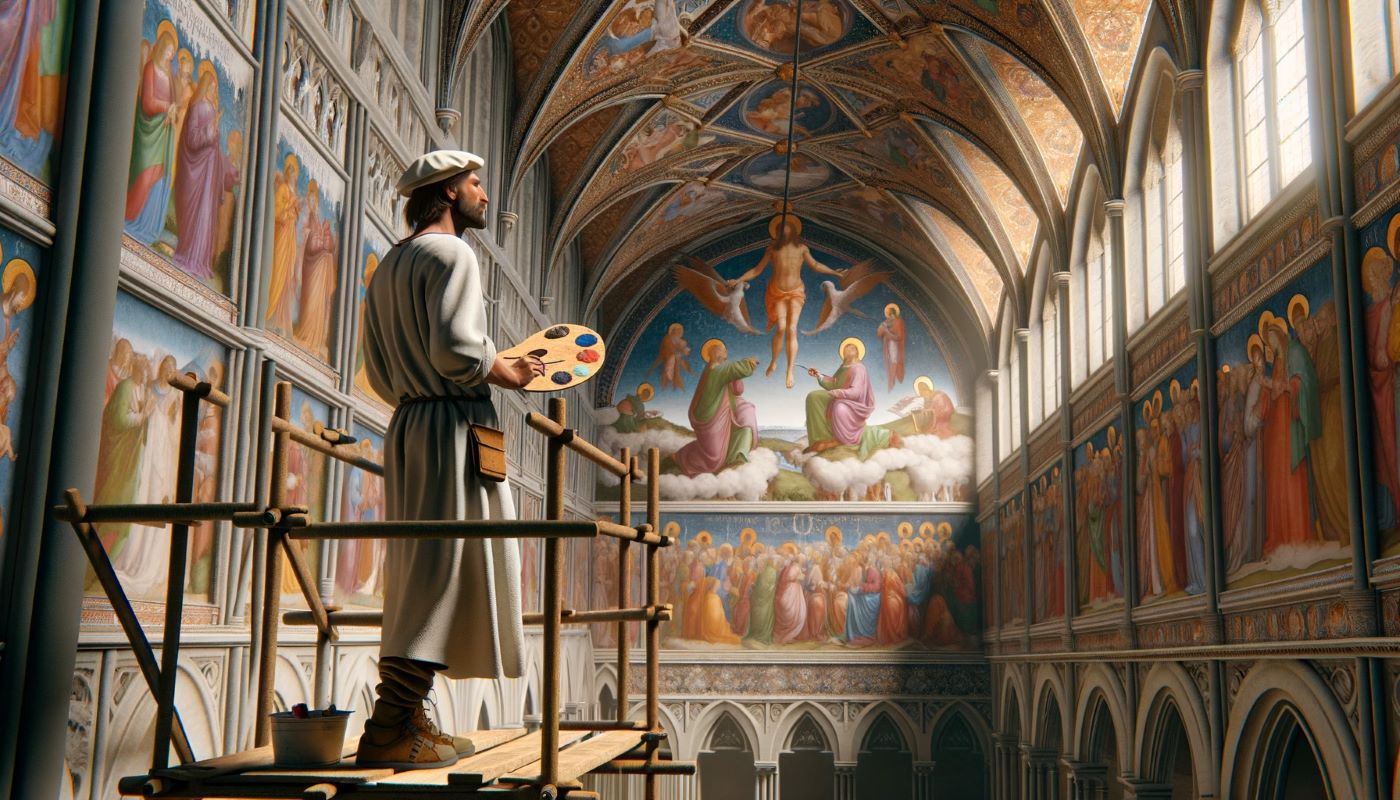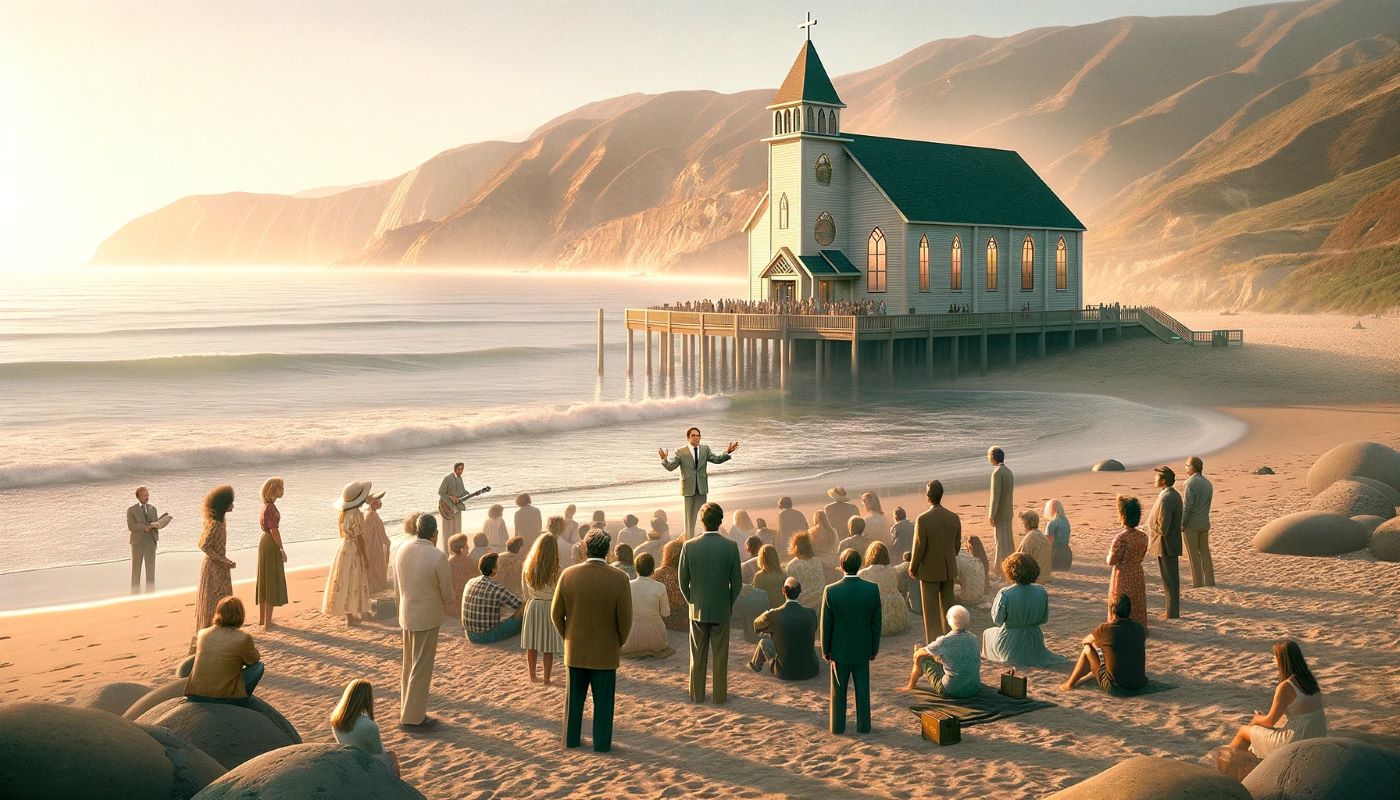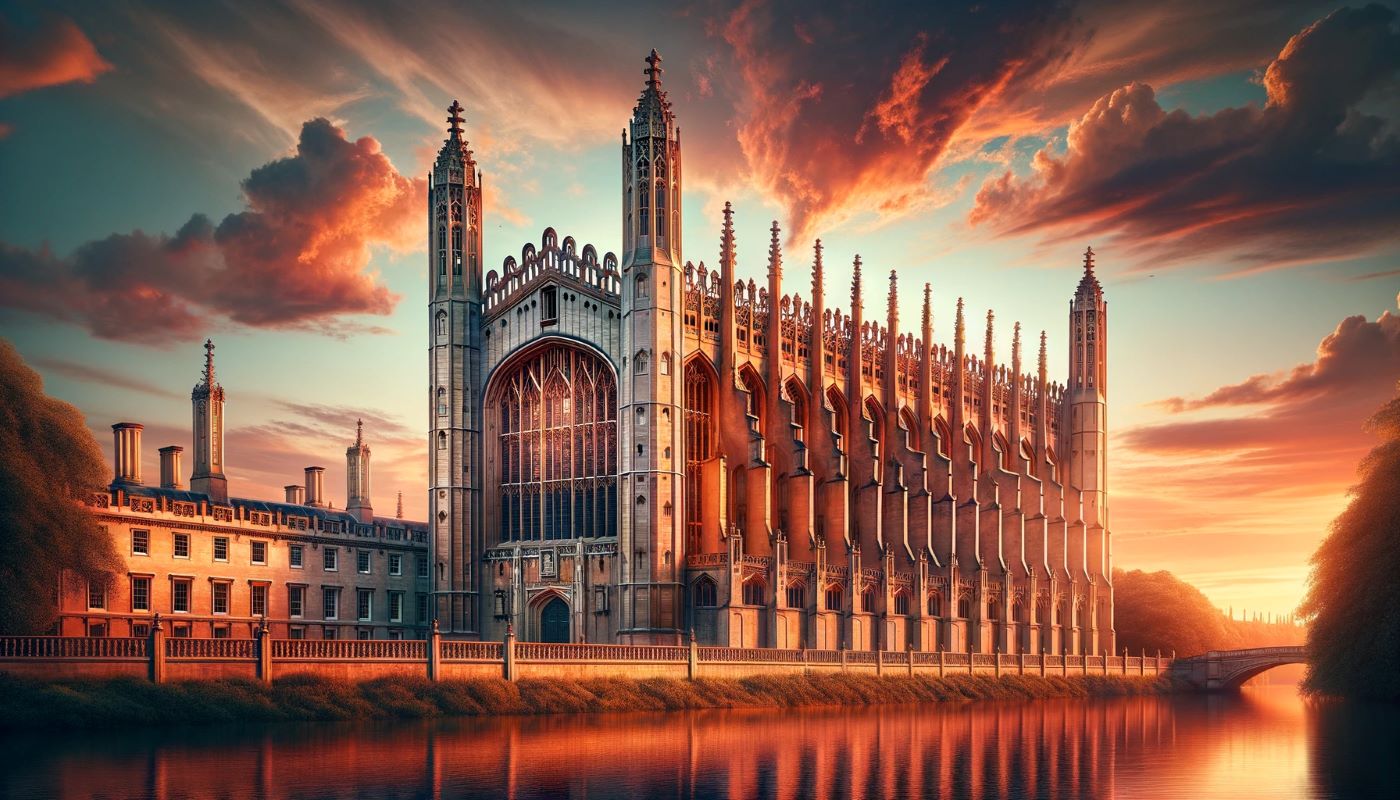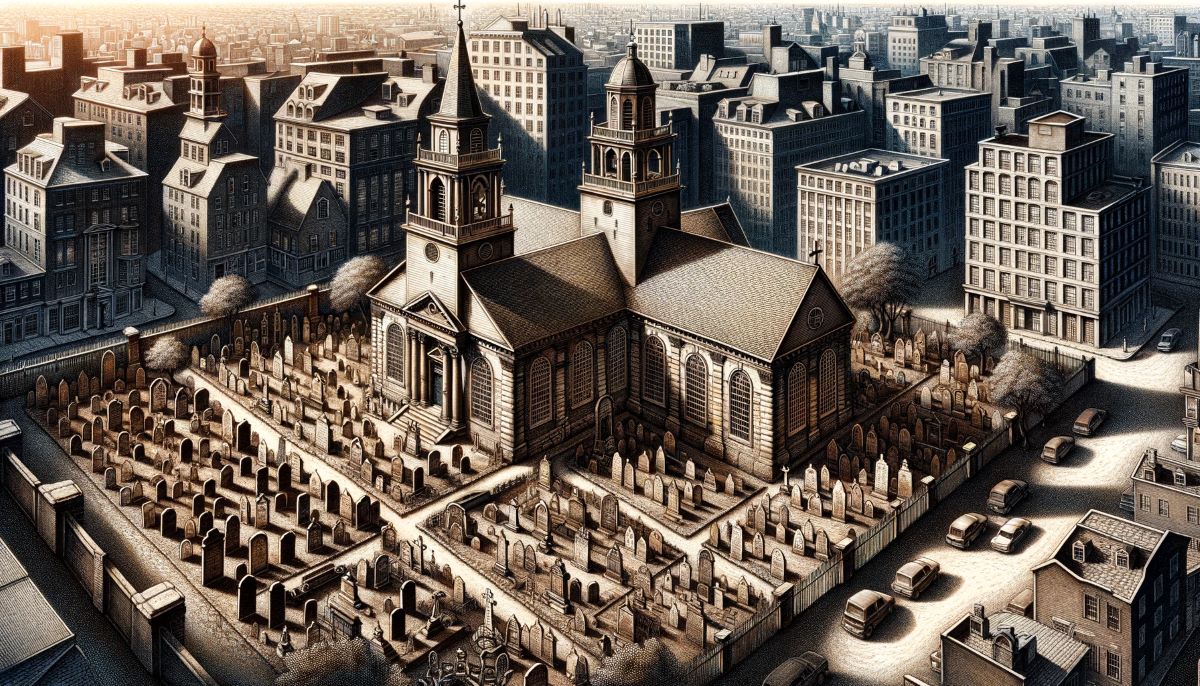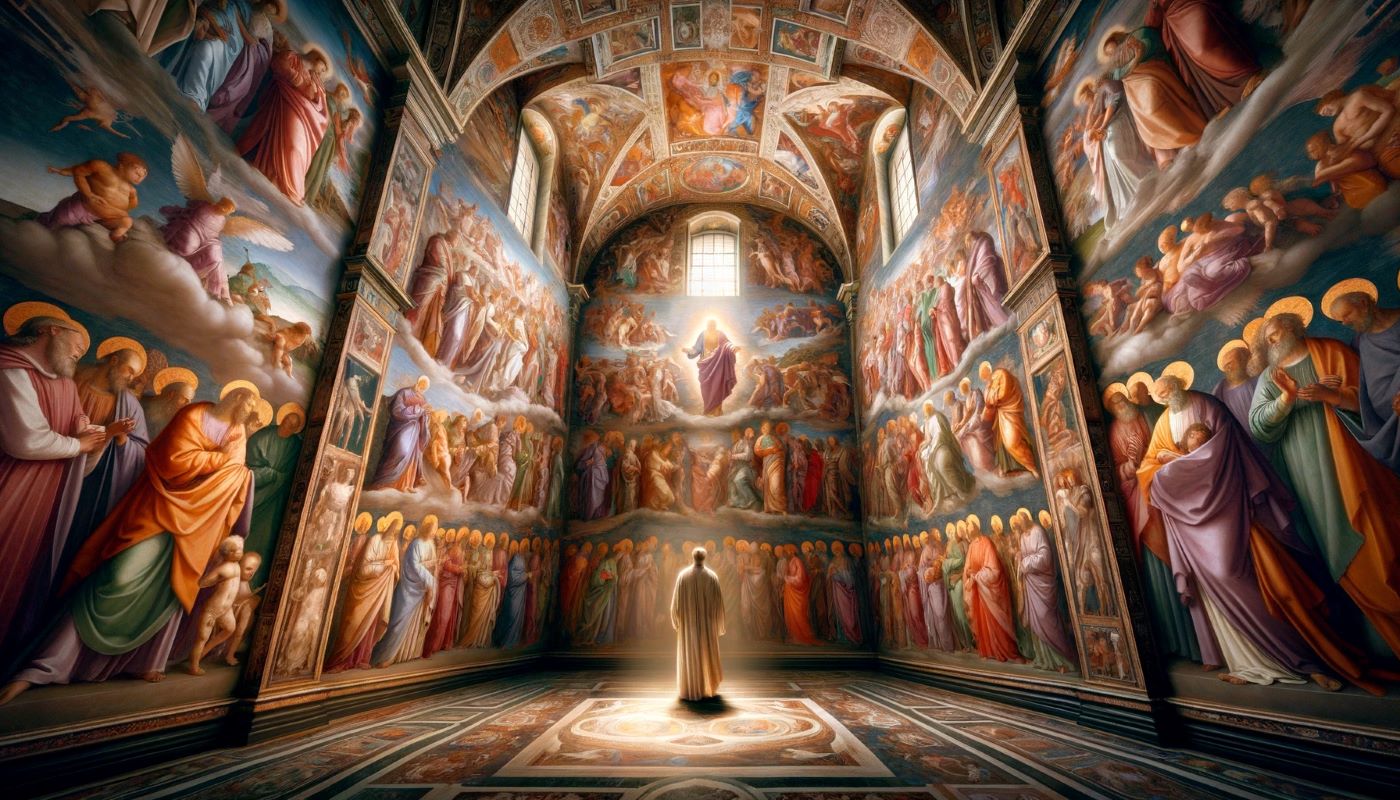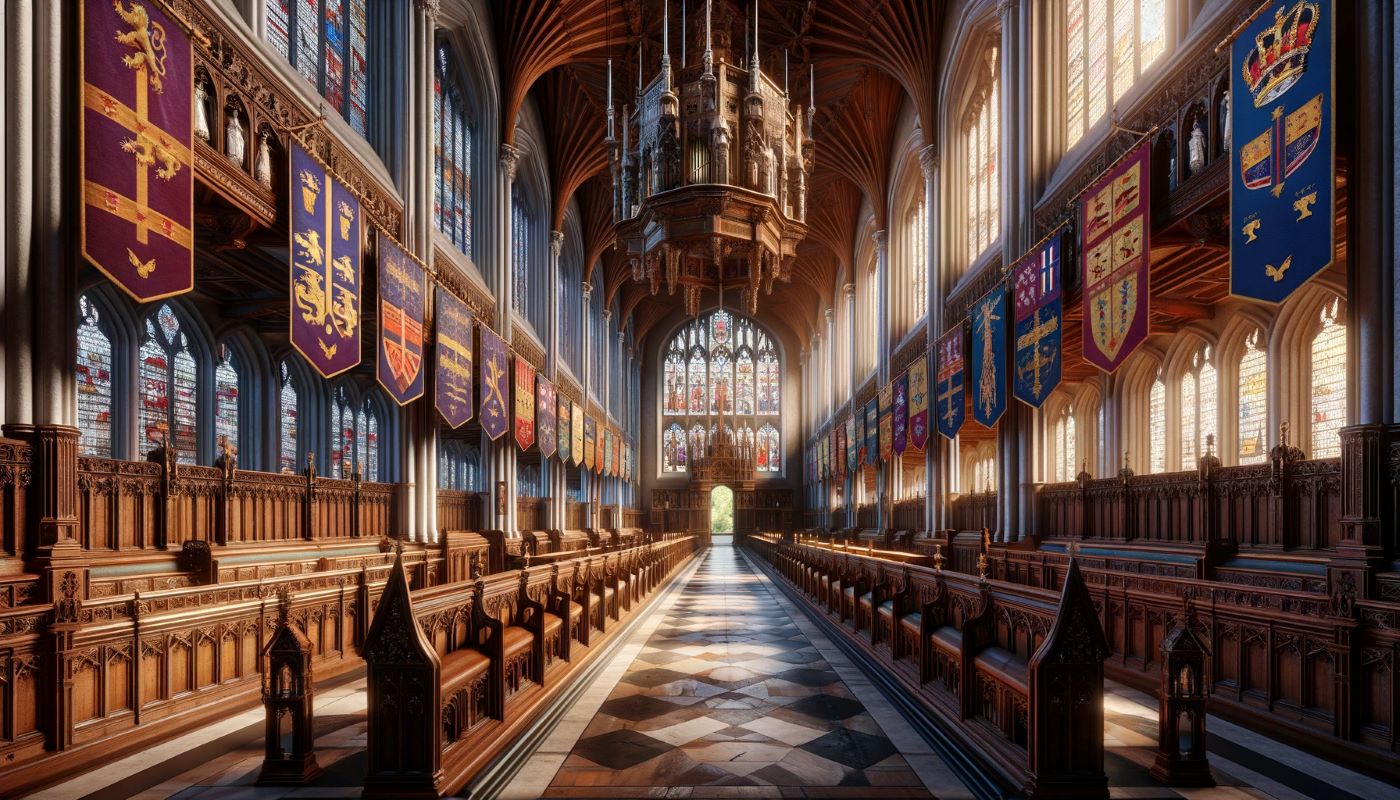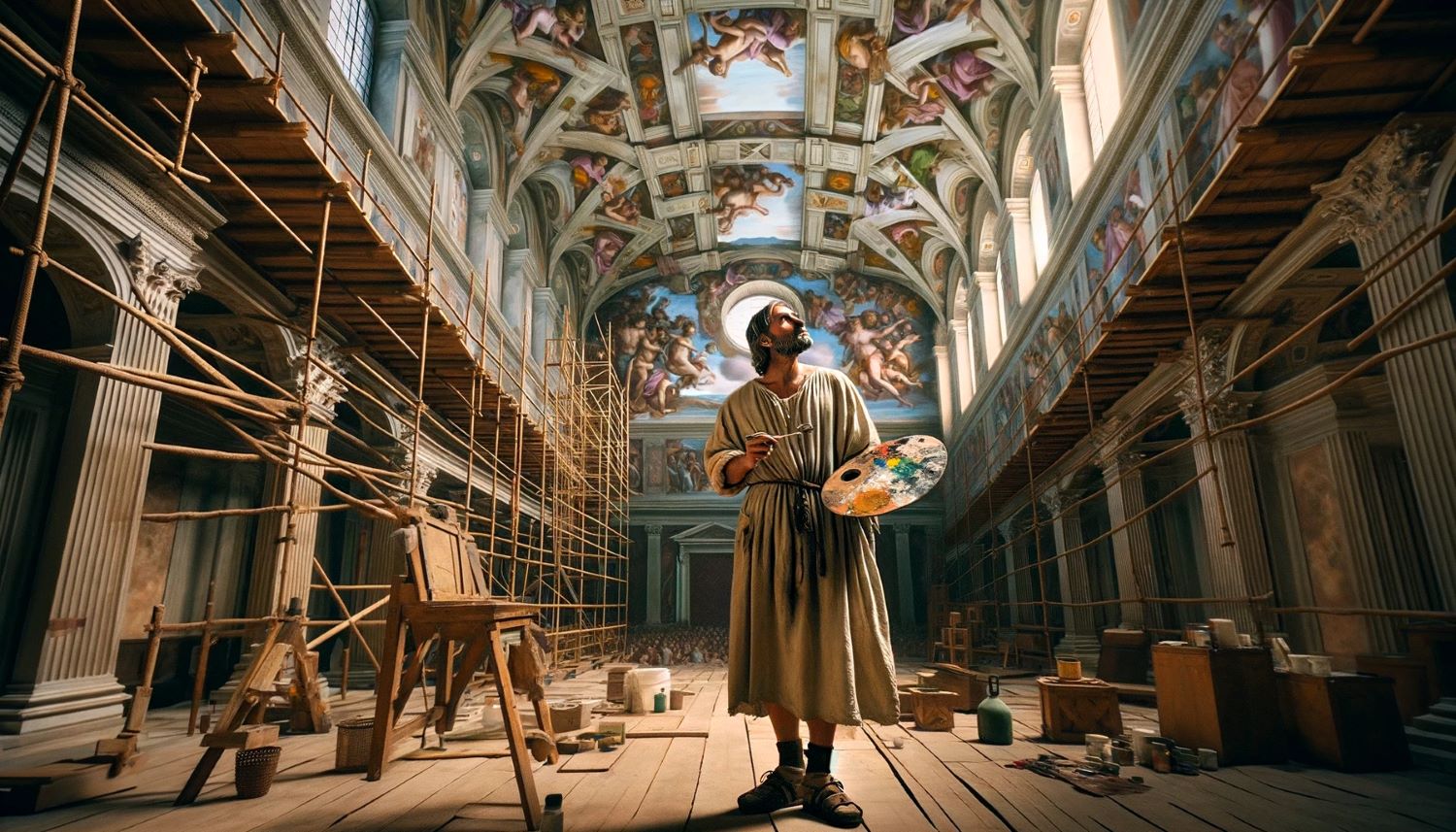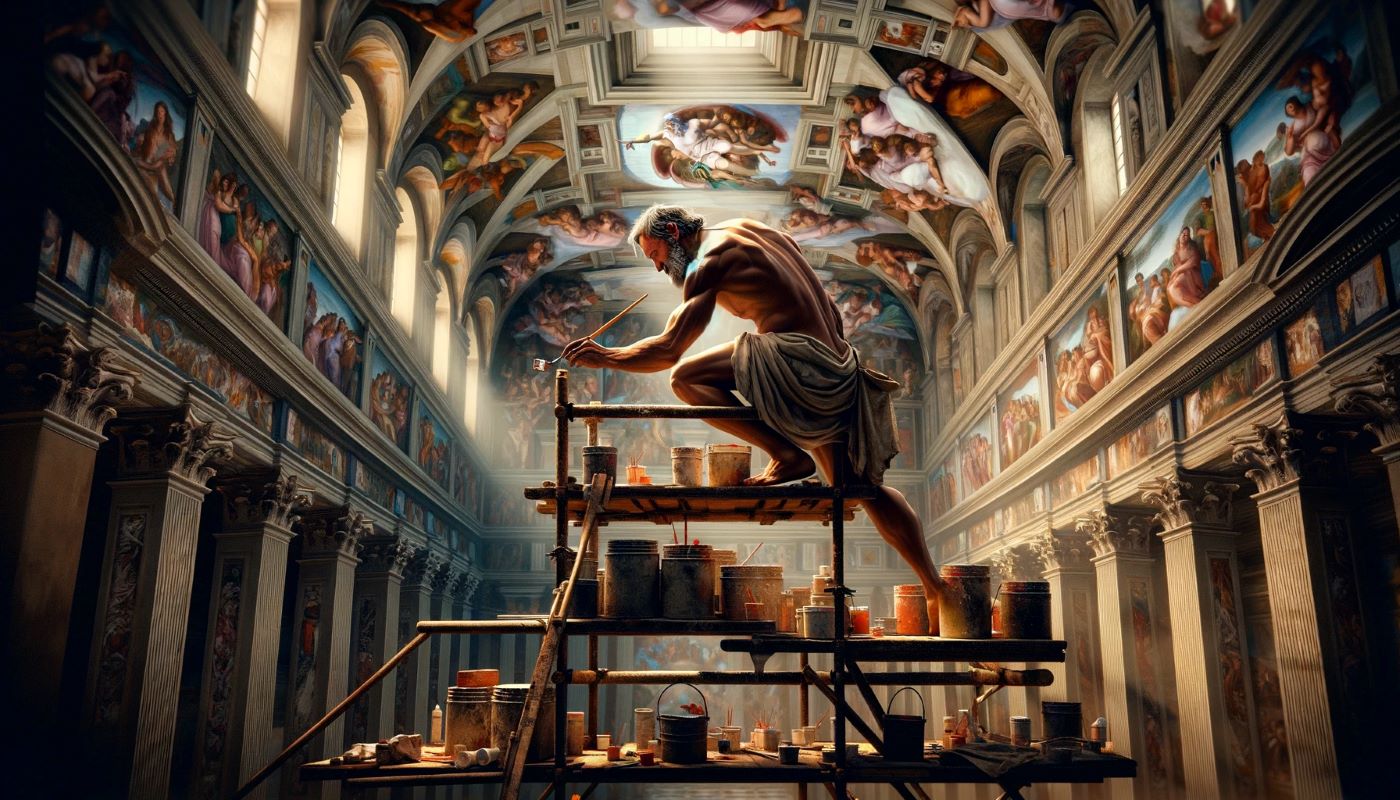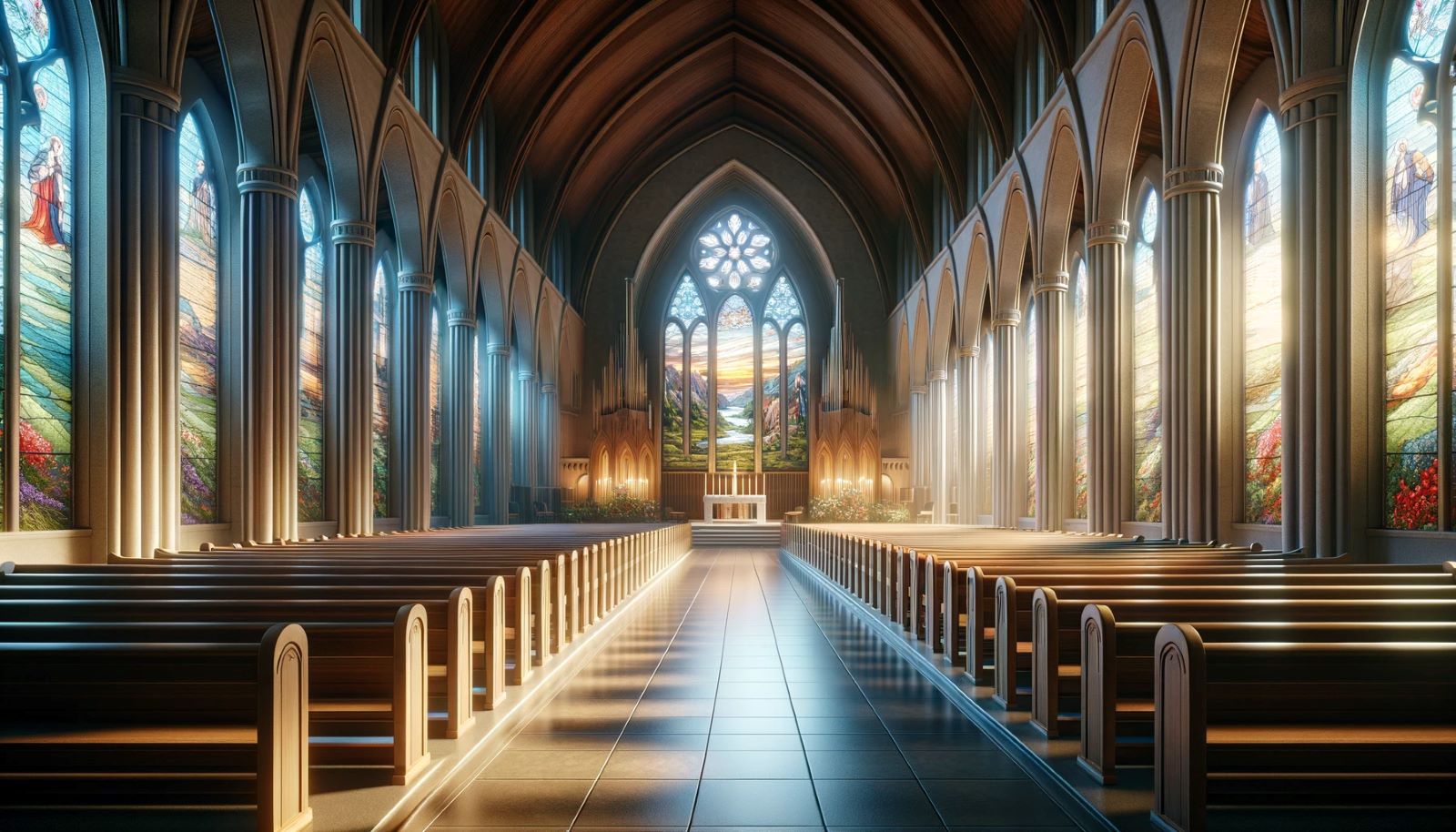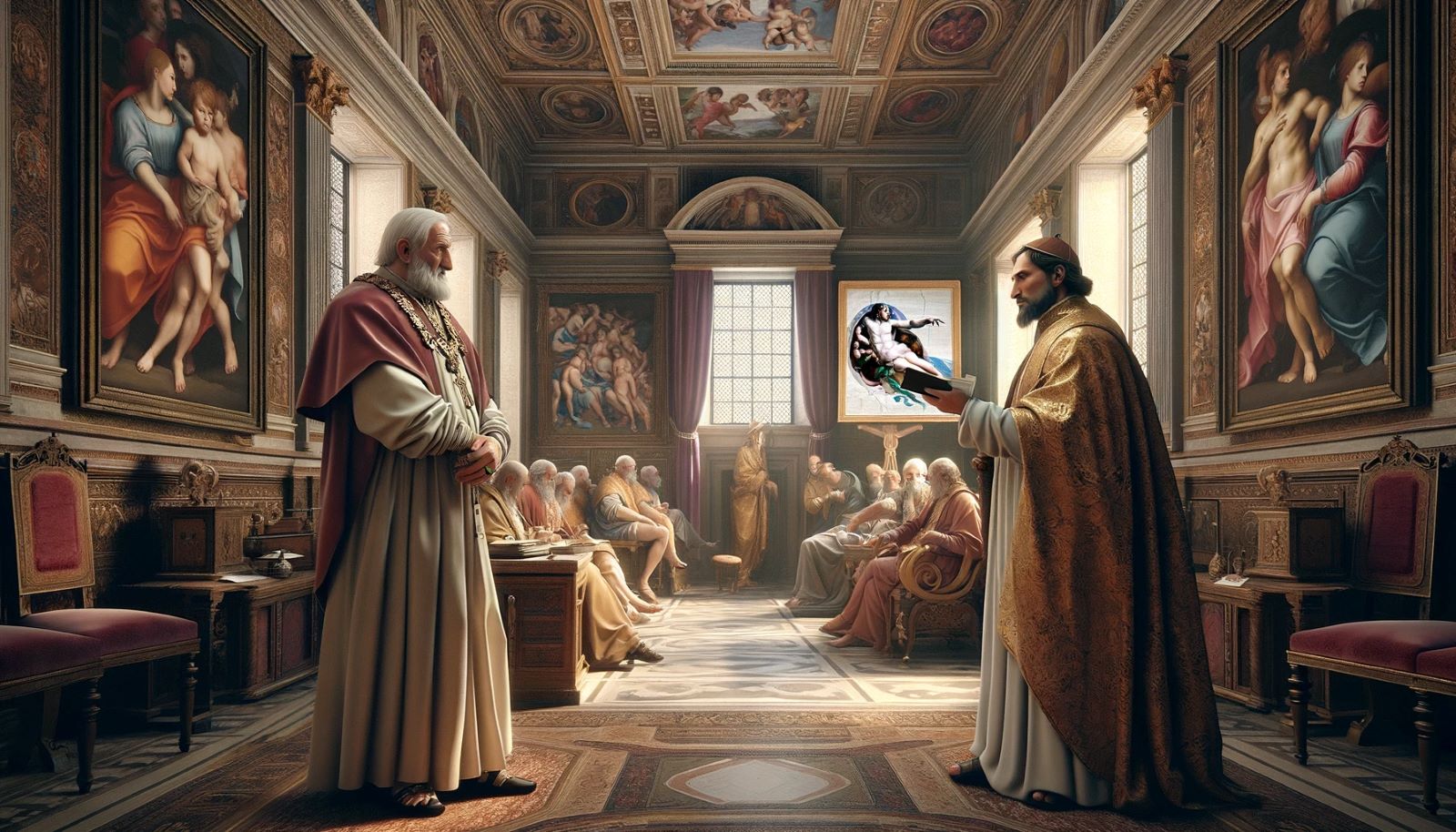Home>Arts and Culture>Who Designed Thorncrown Chapel?


Arts and Culture
Who Designed Thorncrown Chapel?
Published: March 4, 2024
Jason DeRose, Managing Editor at Christian.net, uses his expertise in religion and journalism to deepen understanding of faith's societal impacts. His editorial leadership, coupled with a strong academic background, enriches the platform’s diverse content, earning him recognition in both journalism and religious circles.
Discover the architect behind Thorncrown Chapel and explore the intersection of arts and culture in this iconic architectural masterpiece. Learn about the creative mind behind this renowned structure.
(Many of the links in this article redirect to a specific reviewed product. Your purchase of these products through affiliate links helps to generate commission for Christian.net, at no extra cost. Learn more)
Table of Contents
Introduction
Who designed Thorncrown Chapel? This question has intrigued many visitors and architecture enthusiasts alike. The renowned Thorncrown Chapel, nestled in the serene woods of Arkansas, is a masterpiece of modern religious architecture. Its unique design and breathtaking beauty have captivated countless individuals over the years. In this article, we will delve into the fascinating story behind the creation of Thorncrown Chapel, exploring the architect, design process, influences, construction, and its enduring impact. Join us on this journey to uncover the remarkable tale of the visionary mind behind this iconic chapel.
Read more: Who Was The Sistine Chapel For
The Architect Behind Thorncrown Chapel
The brilliant mind behind the creation of Thorncrown Chapel is none other than renowned architect E. Fay Jones. Born in Pine Bluff, Arkansas, in 1921, Jones developed a deep appreciation for nature and its integration into architectural design from an early age. He studied under the legendary Frank Lloyd Wright, whose principles greatly influenced his architectural style. Jones' commitment to blending architecture with the natural environment is evident in his design of Thorncrown Chapel, which seamlessly harmonizes with its woodland surroundings. His vision for the chapel was to create a space that not only served as a place of worship but also celebrated the beauty of the Ozark landscape.
Jones' architectural expertise and unwavering dedication to his craft are reflected in the meticulous design of Thorncrown Chapel. His ability to envision a structure that complements its natural setting while evoking a sense of spiritual awe has solidified his legacy as a pioneering figure in modern religious architecture. Through his innovative approach, Jones has left an indelible mark on the world of architecture, and Thorncrown Chapel stands as a testament to his extraordinary talent and vision.
The Design Process
The design process of Thorncrown Chapel was a labor of love that stemmed from E. Fay Jones' deep reverence for nature and his profound understanding of architectural harmony. Jones embarked on the journey of creating the chapel with a clear vision in mind – to craft a space that would seamlessly blend with its natural surroundings while evoking a sense of spiritual transcendence.
-
Integration of Nature: Jones's design process began with a meticulous study of the chapel's site, carefully considering the existing trees, topography, and natural light. His goal was to integrate the chapel into the landscape in a way that honored the surrounding environment. This approach involved minimal site disturbance, allowing the chapel to emerge organically from the earth, as if it were an inherent part of the woodland.
-
Emphasis on Light and Space: Central to the design process was the manipulation of light and space to create a transcendent experience for visitors. Jones strategically incorporated expansive windows that flooded the interior with natural light, blurring the boundaries between the chapel's interior and the enchanting outdoor scenery. The interplay of light and space within the chapel was carefully orchestrated to evoke a sense of serenity and spiritual contemplation.
-
Material Selection: The selection of materials was a crucial aspect of the design process. Jones opted for indigenous materials such as local pine and stone, further anchoring the chapel within its natural context. The use of these materials not only contributed to the chapel's seamless integration with the environment but also imbued it with a sense of timelessness and authenticity.
-
Simplicity and Elegance: Throughout the design process, Jones adhered to the principles of simplicity and elegance, eschewing unnecessary ornamentation in favor of a pure and understated aesthetic. This approach allowed the chapel to exude a sense of tranquility and reverence, inviting visitors to immerse themselves in the beauty of the natural world.
The culmination of Jones's meticulous design process resulted in the creation of Thorncrown Chapel, a testament to his unwavering commitment to architectural excellence and his deep respect for the sanctity of nature. The chapel stands as a testament to the power of thoughtful design and serves as a source of inspiration for architects and visitors alike, inviting all who encounter it to pause, reflect, and appreciate the profound beauty of the natural world.
Influences and Inspiration
E. Fay Jones drew inspiration from a myriad of sources that profoundly influenced the design of Thorncrown Chapel. His time spent studying under the tutelage of Frank Lloyd Wright left an indelible mark on his architectural philosophy. Wright's emphasis on organic architecture, which seeks to harmonize human habitation with the natural world, resonated deeply with Jones and served as a guiding principle in the creation of the chapel.
The tranquil beauty of the Ozark landscape itself served as a profound source of inspiration for Jones. The rolling hills, dense woodlands, and the gentle whisper of the wind through the trees all played a pivotal role in shaping his vision for the chapel. He sought to capture the essence of the natural world and translate it into a sacred space that would evoke a sense of wonder and reverence.
Furthermore, Jones's deep appreciation for the spiritual and contemplative aspects of religious architecture informed his approach to designing Thorncrown Chapel. He drew from a rich tapestry of historical and cultural influences, seeking to distill the timeless essence of sacred spaces into a modern architectural marvel. The transcendent beauty of Gothic cathedrals and the serene simplicity of Japanese temples served as touchstones for Jones, guiding him in his quest to create a space that would resonate with the human spirit.
In essence, the influences and inspiration behind Thorncrown Chapel are a testament to the profound interconnectedness between nature, spirituality, and architectural design. Jones's ability to synthesize these diverse influences into a cohesive and harmonious whole is a testament to his visionary approach to architecture, and it has resulted in the creation of a space that continues to inspire and uplift all who encounter it.
Construction and Materials Used
The construction of Thorncrown Chapel was a feat of architectural ingenuity and craftsmanship, reflecting E. Fay Jones's unwavering commitment to excellence. The chapel's construction commenced in 1979 and was completed in a mere nine months, a testament to the dedication and skill of the construction team. The use of indigenous materials, such as native pine and stone, was integral to the chapel's construction, allowing it to seamlessly blend with its natural surroundings. The timber used in the construction was sustainably sourced, further emphasizing Jones's reverence for the environment and his desire to minimize the ecological impact of the project.
The construction process itself was a meticulous endeavor, with every detail carefully executed to bring Jones's vision to life. The timber beams, which form the chapel's iconic soaring structure, were expertly crafted and assembled to create a sense of ethereal lightness and openness within the space. The intricate joinery and precise placement of each beam were a testament to the skill and artistry of the craftsmen involved in the construction.
In addition to the timber, the extensive use of glass in the chapel's design was a defining feature of its construction. The expansive windows, stretching from floor to ceiling, allowed natural light to flood the interior, creating a seamless connection between the tranquil woodland setting and the sacred space within. The careful integration of these materials not only contributed to the chapel's aesthetic appeal but also played a crucial role in shaping the overall experience of visitors as they engage with the chapel's serene interior.
The construction and materials used in Thorncrown Chapel exemplify a harmonious union of architectural vision and skilled craftsmanship. The thoughtful selection of indigenous materials and the meticulous execution of the construction process have resulted in a space that continues to inspire awe and reverence, inviting all who enter to experience the transcendent beauty of this architectural masterpiece.
Read more: Who Painted The Arena Chapel
Impact and Legacy
The impact of Thorncrown Chapel extends far beyond its physical presence, leaving an enduring legacy that resonates with visitors and architects alike. Since its completion, the chapel has garnered widespread acclaim and has been celebrated as a triumph of modern religious architecture. Its ethereal beauty and seamless integration with the natural environment have captivated the hearts and minds of all who have had the privilege of experiencing its tranquil embrace.
1. Spiritual Sanctuary
Thorncrown Chapel stands as a testament to the power of architecture to create a spiritual sanctuary that transcends religious denominations. Visitors from diverse backgrounds have found solace and inspiration within its hallowed walls, drawn to the chapel's serene atmosphere and the profound sense of connection to nature that it evokes. The chapel's ability to foster a deep sense of introspection and contemplation has solidified its status as a place of spiritual pilgrimage for individuals seeking moments of quiet reflection and renewal.
2. Architectural Inspiration
E. Fay Jones's visionary design has left an indelible mark on the world of architecture, inspiring a new generation of architects to embrace the principles of organic design and harmonious integration with the natural world. Thorncrown Chapel serves as a living testament to the transformative power of architectural innovation, encouraging architects to push the boundaries of traditional design and create spaces that honor the sanctity of nature while elevating the human spirit.
3. Environmental Stewardship
The chapel's construction and design underscore a deep commitment to environmental stewardship, setting a precedent for sustainable architecture. By utilizing locally sourced materials and minimizing site disturbance, Thorncrown Chapel exemplifies a harmonious coexistence with the natural world. Its legacy as a model of eco-conscious design continues to inspire environmentally responsible architectural practices, emphasizing the importance of preserving and celebrating the earth's natural beauty.
Read more: Who Designed Pazzi Chapel
4. Enduring Beauty
Decades after its completion, Thorncrown Chapel continues to draw visitors from across the globe, enchanting them with its timeless beauty and transcendent aura. Its enduring legacy as a beacon of architectural excellence and spiritual serenity ensures that it will remain a cherished landmark for generations to come, inviting all who encounter it to pause, reflect, and marvel at the profound harmony between human creativity and the splendor of the natural world.
In essence, the impact and legacy of Thorncrown Chapel are a testament to the transformative power of architecture to inspire, uplift, and unite individuals in a shared reverence for the beauty of the natural world. Its enduring legacy serves as a reminder of the profound connection between architecture, spirituality, and the sanctity of nature, leaving an indelible imprint on the hearts and minds of all who are touched by its transcendent presence.
